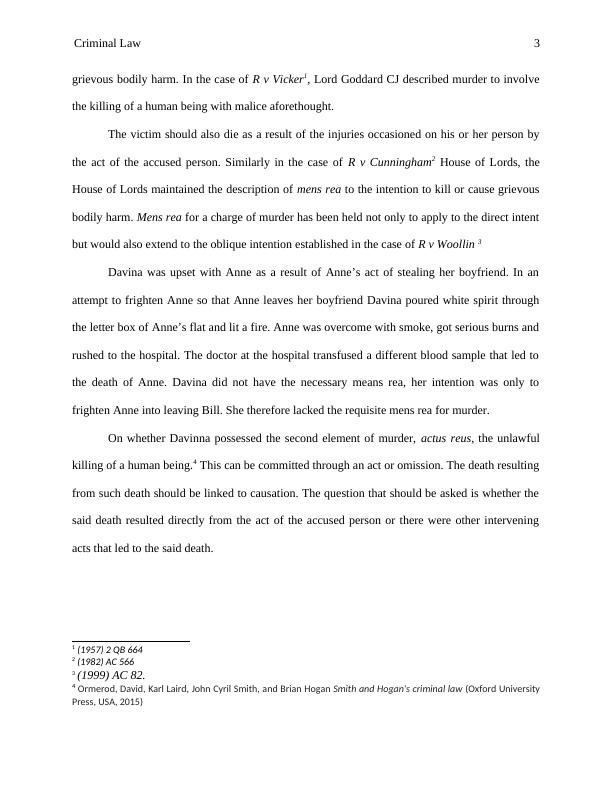Criminal Law: Elements of Murder and Available Defenses
6 Pages1406 Words67 Views
Added on 2023-06-11
About This Document
This article discusses the elements of murder in criminal law, including actus reus and mens rea. It also explores the available defenses for murder charges, such as diminished responsibility, mistake, and loss of control. The article concludes by discussing other charges that may apply in cases where murder cannot be proven beyond a reasonable doubt.
Criminal Law: Elements of Murder and Available Defenses
Added on 2023-06-11
ShareRelated Documents
End of preview
Want to access all the pages? Upload your documents or become a member.
Criminal Law: Murder and Defences
|12
|3002
|428
Criminal Liability for Murder
|6
|1204
|237
CRIMINAL LAW. CRIMINAL LAW Name of the Student: Name of
|12
|3333
|39
Criminal Law Research on Murder Case and Territorial Jurisdiction
|10
|3551
|74
Overview of Criminal Law | Assignment
|10
|2675
|24
Criminal Law Assignment - Criminalizing Unlawful Act Manslaughter
|7
|1908
|39



